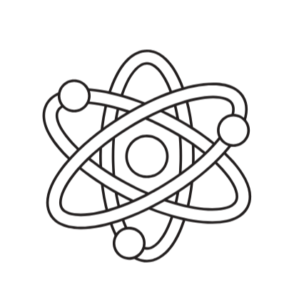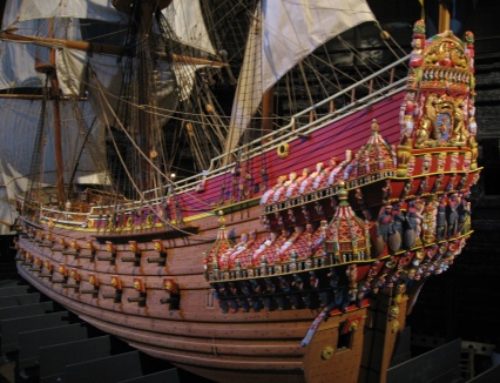In 1301, the medieval Italian painter Giotto di Bondone (1267-1337), observed Halley’s comet, which he memorialized as the star of Bethlehem in his painting, Adoration of the Magi.
Almost 700 years later, he was honored by having his name carried by the first space craft mission to visit Comet Halley, Giotti. This was also the first mission of the European Space Agency.
Once authorized by the ESA in 1980, there was a hard deadline for rendezvous. If the window was missed, the next window wouldn’t open for more than 76 years.
The satellite launched on July 2, 1985 a top an Airane 1 Rocket. The space craft was initially launched into a geostationary orbit, where it was spun up to 15 rpm. The engine fired again to launch it into an interplanetary orbit inside the Earth’s, with a 10 month orbital period.
After a leisurely cruise of only eight months, Giotti encountered Comet Halley on March 14, 1986. Five years later, the Earth’s and Giotti’s orbits coincided again. This made it possible for a gravity assisted orbital boost using the Earth. The wider orbit placed Giotti on a two-year long journey for its second comet intercept with 26P/Grigg-Skjellerup.
The primary mission of Giotti was to study Comet Haley at its closest approach to the sun, perihelion. Once there, the objective was to use its ten instruments to answer some of the important questions about Comet Halley, such as:
1. what’s the nucleus looks like
2. what’s the element composition of the ices in the coma
3. what are the physical and chemical processes in the comet’s atmosphere
4. what’s the comet’s total gas production rate
5. what’s the composition, size and mass distribution of the dust
6. what’s the interaction between the comet and the solar wind
Ten instruments were carried on board to accomplish this mission:
- a narrow-angle, multicolor camera to obtain pictures of the nucleus
- three mass spectrometers to measure gas and dust composition
- a dust impact detector to measure the mass of dust particles striking the shield
- two plasma experiments to study the solar wind and charged particles
- an energetic particles analyzer to study electrons, protons and alpha-particles
- a magnetometer to study changes in the magnetic field
- an optical probe to study brightness of the coma
Comet Halley is unusual in that it is a long term periodic comet, with a 76 year period and orbits retrograde. It has been observed from Earth from at least 240 BC and will next approach us in 2061. Rather than being named for its discoverer, it is named for Edmond Halley (1656-1742), the person who first predicted its appearance.
Edmond Halley used Newton’s then new gravitation theory to predict that the bright comet seen in 1682 was the same one seen in 1531 and 1601. He correctly predicted it would return in 1758.
At 21:00 UT on March 12, 1986, still 7.8 million km from Comet Halley, Giotti detected the first hint of the comet from whiffs of hydrogen ions. 22 hours later, it passed the bow shock wave and entered the dusty coma and the first images of the Comet Halley’s nucleus were sent back.
Over 12,000 dust impacts were recorded in 122 minutes before closest approach. The rate of particle impact shot up as the space craft passed through a jet of material. 7.6 seconds before closest approach, the spacecraft was sent spinning out of control when a large particle impacted. This large particle was estimated to be between 0.1 and 1 gram. The long range antenna lost its lock with Earth and it took 32 minutes for the on-board stabilizers to bring the craft back under control. Remarkably, the craft re-establish communications with Earth.
At closest approach, the craft was 596 km from the nucleus. The last dust impact was 49 minutes after closest approach. This first encounter with Comet Halley, lasting a little over two days, ended at 2:00 UT on March 15, 1986 when the instruments were placed back into hibernation.
From the 2112 images sent back, the nucleus was found to be peanut shaped, about 15 x 7 x 10 km. The astonishing results about the composition of Comet Halley include:
- 1. Water accounts for 80% by volume of all the material thrown out by the comet, with 10% as CO and 2.5% as CO2 and some methane and ammonia. There were traces of other hydrocarbons, iron and sodium.
- The surface was blacker than coal, suggesting a thick covering by dust, mostly composed of carbon rich materials.
- The nucleus surface was irregular, with a fluffy, porous texture, having a density less than 0.3 gm/cc
- Seven jets were seen which threw out three tons of material per second. These jets imparted a wobbling rotation which is stable for at least centuries.
- Most of the dust is no larger than specs of cigarette smoke. Except for the one massive particle that knocked the spacecraft out of alignment, the largest grain was 40 mg.
- The dust was composed of two main classes. One was dominated by the lighter CHON elements. The other was rich in mineral forming elements, sodium, magnesium, silicon, iron and calcium.
- All the comet’s light elements, except nitrogen, were found in the same relative abundance as in the Sun. This suggests the comet may consist of the original material of the solar system.
Five years after its encounter with Halley, still in its original solar orbit, it passed by Earth and was send on a gravity assisted orbital boost to rendezvous with its second comet, 26P/Grigg-Skjellerup, two years later. Though some of its instruments, such as the imaging camera, were damaged in passing through the dust impacts with Halley, enough were still functional to provide some useful information.
On July 23, 1992, Giotti was commanded to shut down, mission accomplished.
Following the Giotti mission to encounter Comet Halley, five other rendezvous missions had close encounters with comets. The last one was Deep Impact. It was successfully launched by NASA on January 12, 2005. It reached comet 9P/Tempel 1 on July 4, 2005. While the mother craft flew by the comet at 4,000 km, collecting data and watching, a 370 kg, copper and aluminum probe was launched into the comet, hitting the surface at 10.2 km/s.
For additional information check out:
http://en.wikipedia.org/wiki/Giotto_mission#Grigg-Skjellerup_encounter
http://giotto.esa.int/science-e/www/area/index.cfm?fareaid=15






